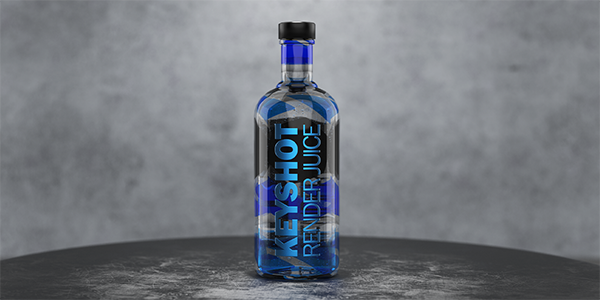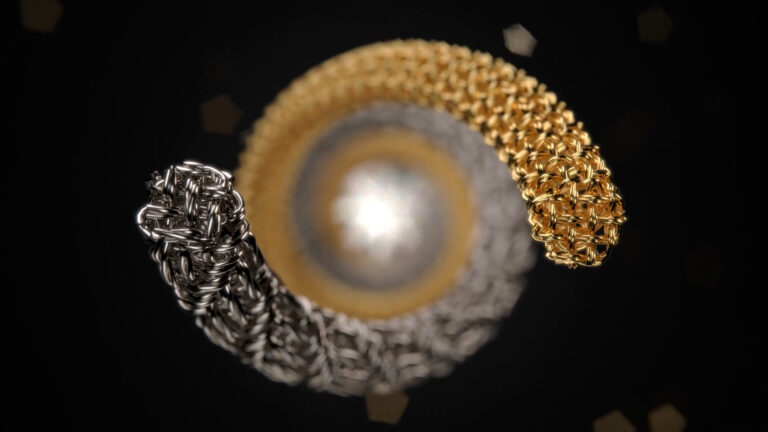If you’ve ever wanted an easy way to stage many products under the same environment and lighting conditions, then KeyShot Scene Templates are the best way for you to accomplish that. This is a new feature we’re excited to bring you in KeyShot 2023.
Where to Find Default Scene Templates
Whether it’s on startup or by hitting the W-key at any time, KeyShot Scene Templates can be accessed through the Welcome Window. With the Welcome Window open, you can find scene templates under the New Scene tab along the left side of the window. Once selected, you’ll find a few default templates already loaded under the tab. You’ll find a Large, Medium, and Small template as well as the familiar KeyShot Startup environment.
If you have not already created a custom scene template, you’ll only find the default templates in this list. However, this is also the same place you’ll find any custom templates you save in the future.
To use a template, simply select the template of choice and hit the Create button to the bottom right of the window to open the scene. If you’re following our Scene Template quick tip video, we use the Large template for demonstration purposes, but the same principles apply to the Medium and Small templates as well.
How to Use a Default Scene Template
With the scene open, you will notice that a blue, outlined box will be the subject of the scene. This box is simply a placeholder and can be toggled off under Model Sets (located in the Project window, Scene tab) by unchecking the Placeholder model. However, it’s a great idea to leave it toggled on as a reference point while you stage your scene. The box itself also has some dimensions listed. Essentially, the purpose of the placeholder box is to illustrate the intended scale and placement of an object within a given Scene Template. These are just general guidelines, so don’t be afraid to tailor a template to your own needs.
You should also be aware that the preset Camera is locked and Depth of Field may be enabled. If you need to shift your camera view while staging a scene, be sure to unlock the Camera or select Free Camera, and toggle off Depth of Field if needed. All of this may be done in the Project window, Camera tab.
At this point, you can stage your scene as you would like and render the scene as you normally would.
How to Create Custom Scene Templates
To create a custom scene template, you’ll want to work with a scene you’ve either previously staged or one that you built out specifically for creating the custom template. I recommend creating a fully staged scene with a model that is generally close in size to the products you plan on staging with the template in the future.
Then, light your object so that the template’s lighting is set to an object of that size. This will ensure that lighting is similar between products and will decrease the number of adjustments required when moving from subject to subject.
Once your scene is built and you are satisfied with the result, we recommend hiding or deleting the subject of the scene before saving. You can also create a placeholder if you prefer, similar to the way we have created a placeholder box in the provided default templates.
At this point you are ready to save your template.
How to Save Scene Templates
To save your Scene Template, go to the File menu and select Save Scene Template from the save options on the menu. This will open the Save Template window.
Here, you will be able to name your scene and select what elements to include in the final template. You’ll be able to include the following in your saved template: Geometry, Nurbs, Cameras, Environments (HDRIs), Image Styles, Studios, and Animations. You can also select which Model Sets to include using the dropdown just to the right of the Geometry option.
Once you have determined what to include, hit Save and your Scene Template is ready for use for any future projects.
As mentioned at the beginning of the article, once you have a Scene Template saved, you can access that template through the welcome window on startup or at anytime by using the W-key.
How Will You Use Scene Templates?
Whether you’re a beginner just looking for a quick way to get started making high quality visuals, or you’re an organization that needs to simplify and streamline your product pipeline, consider giving KeyShot Scene Templates a try.
Let’s See What You Create!
We would love to see what you create with this tip. Check out the new KeyShot Luminaries online community to see what others are creating and share your own work. And if you have a suggestion for another tip, share it in the comments below.








